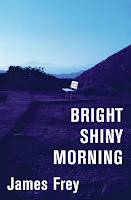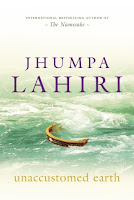 David Bergen’s lyrical, gut-wrenching and tragic novel surprised me. I picked it up on a whim, trying to satisfy my Manitoba requirement for The Canadian Book Challenge, from a pile of books that were about to be sent back to the warehouse. Am I ever glad that I did.
David Bergen’s lyrical, gut-wrenching and tragic novel surprised me. I picked it up on a whim, trying to satisfy my Manitoba requirement for The Canadian Book Challenge, from a pile of books that were about to be sent back to the warehouse. Am I ever glad that I did.
The story of a middle-aged man who lives in small-town Manitoba, See the Child begins with a tragedy, as do so many good, Canadian literary novels. A knock on the door wakes protagonist Paul. He comes downstairs and expects to see his missing son at the door; instead, Harry, the local police officer, stands in front of him to say that Stephen’s dead. The rest of the novel deals with Paul dealing with the loss of his son. Stephen’s girlfriend, Nicole, was pregnant at the time of his death and when she and his young grandson come to live with him at his apiary, the young boy, named Sky, becomes his lifeline.
A couple of years ago, I read Bergen’s The Time in Between, and it took me months to finish. The book just didn’t capture my attention, so I was reticent to try more Bergen. However, this novel had me from the first few pages, I read the book up until the last moment of having to babysit, walked with it home down Lansdowne, and went to bed early so I could finish it after I got home from my cousin’s. The narrative stays close to Paul. And it’s not that we feel his suffering, we see it, in his actions, in his conversations, in how he almost abandons his life from before when his son was alive. It’s a novel about small town life, and has strong resonances of Margaret Laurence, which is probably why I liked it so much.
READING CHALLENGES & WHAT’S UP NEXT: As I mentioned, this is Manitoba for The Canadian Book Challenge. That’s 10 out of the 13 to make my cross-country reading adventure. I’m still a bit stumped by Nunavut, but I’ve got Nova Scotia (Saints of Big Harbour) at the ready to dive into after I finish Donna Tartt’s exceptional (so far) The Secret History.







